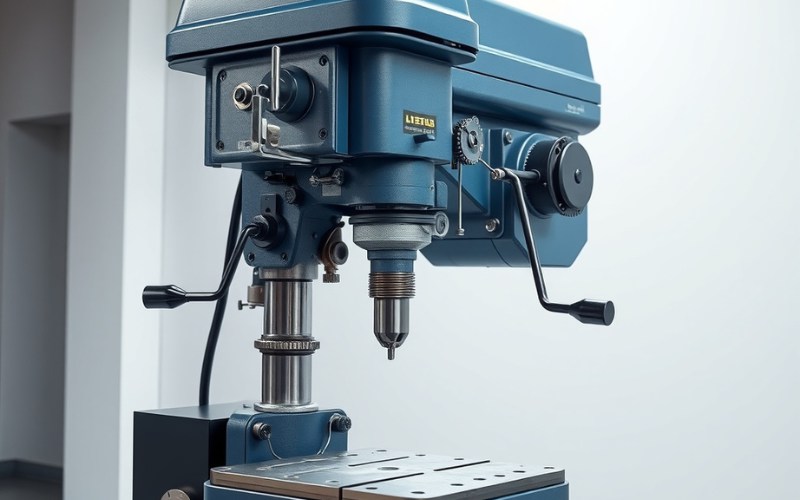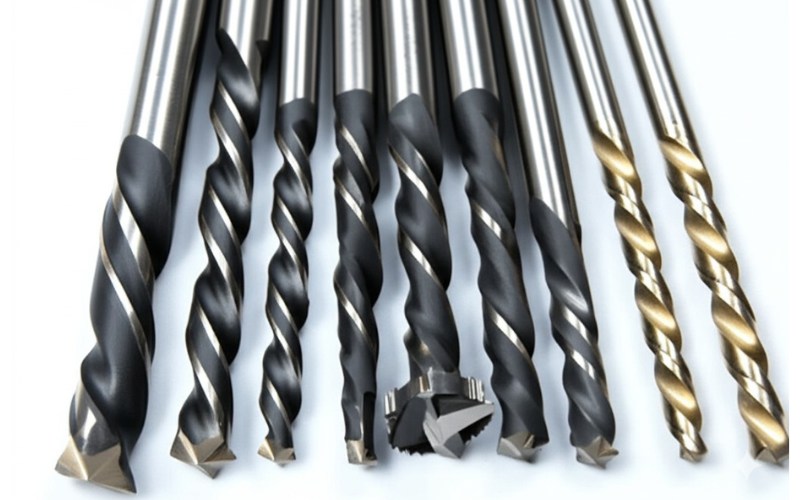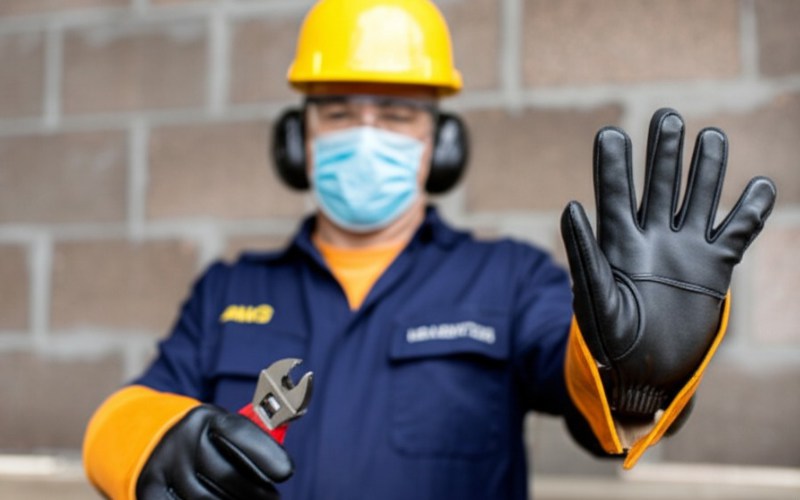Let Istar help you get started on your project with our experience and know-how!
Upload your design files and production requirements and we will get back to you within 30 minutes!

The drill machine works very hard. It can do a lot more than just make a hole. This guide is written for people who want to learn more about this great machine. We will look at all its parts and the different kinds of drill machines. We will also talk about the jobs you can do with them. This article is a good place to start if you want to use a drill machine the right way and make good things. I will tell you what I know to help you get started with this machine.
The drill machine looked hard to understand. But it is actually very simple when you look at its parts. You can think of it like a car. You do not have to know every small part. But knowing the main parts helps you use it in a better way. This is also true for a drill machine. When you know the main parts, you can use the machine safely. You can also do better work. A good drill machine is built with strong parts that fit together well. They move without any problems.
Every drill machine has a few of the same basic parts. This is true for a small one on a bench or a very big one in a factory. The base is the bottom part. It keeps the machine from moving around. The column is a tall post that holds up the other parts. The work table is the flat spot where you put your workpiece. The workpiece is the thing you are drilling. The drill head is a very important part. It has the motor and the spindle inside. The spindle is the part that turns around and around. The drill chuck is at the end of the spindle. It holds the drill bit so it does not fall out. All these parts help the machine be a strong tool for any work area.
| Part | What It Does |
|---|---|
| Base | Keeps the whole machine steady. |
| Column | Holds up the drill head and the work table. |
| Work Table | A flat area to hold the workpiece. Many can be moved up or down. |
| Drill Head | Holds the motor, spindle, and the parts that move the drill down. |
| Spindle | The turning part that holds the chuck. |
| Drill Chuck | A clamp that holds onto the drill bit to keep it in place. |
| Electric Motor | Gives power to make the spindle turn. |
| Feed Mechanism | A handle you use to move the drill bit down into the material. |

The way a drill machine works is very easy to understand. It changes spinning motion into a cutting motion. The electric motor makes the spindle turn. A belt and a pulley often connect the motor to the spindle. This system lets you make the drill spin faster or slower. When you switch on the machine, the motor turns the spindle. Then, the spindle turns the drill bit. It is a very simple process. This is how the machine works using this basic but strong idea.
When you use the machine, your job is to control the spinning drill bit. You will use a handle, which is the feed mechanism. This lets you move the spinning drill bit down into the workpiece. The drill bit has sharp cutting edges. These edges cut away the material. This makes a nice round hole. You must push down with an even amount of force. If you do not push hard enough, the drill will not cut right. If you push too hard, you might break the drill bit. You could also mess up your workpiece. This is the simple way that every drill machine is used to drill holes. It is a machine you can count on to do this main job well.
I have found that it is important to use the right tool for each job. For example, you would not use a little hammer to break a big piece of concrete. A drill machine is the same way. There are many kinds of drilling machines. Each one is made for a special kind of job. Some are small drills you can hold in your hand. Others are huge machines you see in a factory. Picking the right type of drill for your work is very important to do a good job.
The kinds you will see most of the time are portable drills and bench drills. A bench drill is also called a drill press. You might also see radial drills. Portable drills are good for jobs where you need to move around. Bench drills are attached to a work table. They give you more power and help you drill very straight holes. A radial drill machine has a long radial arm. This arm can move around. This helps you place the drill over a very big workpiece. For work that needs many holes, there is a multi-spindle drill machine. This machine can drill more than one hole at the same time. The kind of drill machine you should get is based on how big your workpiece is. It also depends on how exact your holes need to be.
If I was only allowed to have one drill machine in my shop, I would pick a drill press. This machine is also known as a drill press. It is very popular, and there is a good reason for it. It has one big benefit that a handheld drill does not have: it is very steady. The drill press keeps the drill bit pointed straight down. It stays at a perfect 90-degree angle from the work table. This means you will drill straight holes every single time. It is very hard to be that exact when you are holding a drill with your hands. This machine is used for drilling holes that need to be perfect.
A drill press also lets you have more control over your work. You can choose the right speed for the kind of material you are drilling. It has a work table that you can move up and down. On many machines, you can also tilt the table. You can use a clamp to hold your workpiece down so it does not move. This makes the job much safer. The handle gives you extra power. This makes it simple to drill into hard things like steel. You will find a drill press in almost every machine shop. It is a machine that can do many things. It makes the job of drilling easier, safer, and much more exact.
Now we can talk about the new kinds of drill machines. CNC means Computer Numerical Control. A CNC drill machine is a wonderful piece of technology. I have watched these machines work. It looks like you are watching a robot do a very careful job. They can do very hard drilling jobs and be very, very exact. These drilling machines can do work that a person would find almost impossible to do by hand. A computer is what tells this drill machine what to do.
The computer follows a set of instructions called a program. This program is usually written in g-code. It tells the machine the exact place to move and the exact place to drill. A CNC drilling machine can move in many directions. This lets it drill holes from any angle. It can drill many, many holes. Every single hole will be in the right place. These machines usually have tool changers. This means the machine can change its own tool. It can switch to a new drill bit, a tap, or a reamer all by itself. When you need to make parts that are hard to create, CNC drilling is the best choice. This machine makes the work much better and faster.
A lot of people believe a drill machine is only for drilling holes. But that is not all it can do! A good drill machine can be used for many different jobs that involve making holes. I use my own drill press for many things besides just making a plain hole. These other drilling machine operations make the machine very helpful. There are many ways you can finish a hole you have made.
Here are some of the other jobs a drill machine can do:
A drill machine can only work well if you use a good cutting tool. For this machine, that tool is the drill bit. It is very important to pick the right drill bit to do a good job. If you use the wrong kind, you could hurt your workpiece. You could also break the drill bit. It can even be unsafe. The drill bit has sharp cutting edges, and these do the real work. The two main things you need to consider are what the drill bit is made of, and what your workpiece is made of.
When you work with soft things like wood and plastic, a normal high-speed steel (HSS) drill bit is a good choice. When you work with harder metals like steel, you need a stronger drill bit. A drill bit made of cobalt is a good idea. A bit that has a special coating, like titanium nitride, also works well. These kinds are stronger and do not get as hot. You also have to pick the correct size. The size of the drill bit diameters is very important. It helps make sure your pieces will fit with each other. Buying a good set of drill bits is a very smart choice for your drill machine. A good drill bit helps any drill machine to do a better job.
I really like my drill press, but every machine has things it cannot do. The biggest problem with a normal drill machine is that you cannot move it easily. This is especially true for one that stays in one place. You must always bring the workpiece over to the machine. This works fine if your parts are small or not too big. But what do you do if you need to drill a hole in a wall? Or what if you need to drill into a big machine that you cannot move? A drill press is not helpful for those jobs.
Another problem can be the size of the things you can work on. There is only so much space between the spindle and the column. There is also a limit to the space between the drill chuck and the work table. These things decide how big of a workpiece you can use. If you need to work on very large workpieces, a normal drill press may be too small. This is a big reason why there are so many different types of drilling machines. You have to use the right machine for the work you are doing. Sometimes, a simple drill press is not the right one.

Drilling machines are tools that you cannot do without. They are used in almost every kind of business. The number of special jobs they can do seems to go on forever. In a place that works with wood, a drill machine is used to make holes for dowels, screws, and other parts. A drill press drills very straight holes. This helps make sure that cabinets and furniture will fit together just right. The drilling machine is used to create many things from wood. This machine helps people work quickly and correctly.
When working with metal, the jobs are even harder. A drill machine is used to make holes for bolts, pins, and rivets. A worker will use a tap to make threads for a fastener. They will use a ream to make a hole that is a perfect size for a bearing. In places where things are made, a multi-spindle drill machine can drill many holes in one part all at once. This saves a great deal of time. Even people who make electronics use very small drill machines. They use them to make holes in computer parts. The drill machine is a very basic and important tool for making things today.
When people think of a drill machine, they often think of the big, heavy machines in a workshop. But drilling machines are made in many different shapes and sizes. For a lot of jobs, you need a drill that you can take with you to the work area. This is why we have portable drilling machines. The one you see most often is the electric drill that you hold in your hand. I own a few of them. I use them all the time for jobs at my house and at work locations.
These portable drilling machines do not weigh much and are simple to use. They let you drill holes anywhere you have a power cord or a battery. They are not as strong or as exact as a drill press. But they let you work in many more places. There are even portable drills with a magnet on the bottom. This type of drill has a strong magnet. It can hold the machine right onto a piece of steel, like a beam. This keeps the drill steady so you can do exact drilling. This can be done even if you are working high off the ground. For many workers, this machine is a very big help.
I hope this guide was helpful for learning about the great world of the drill machine. It is a machine that has helped build our world in many ways. Here are the main points you should remember from this article: